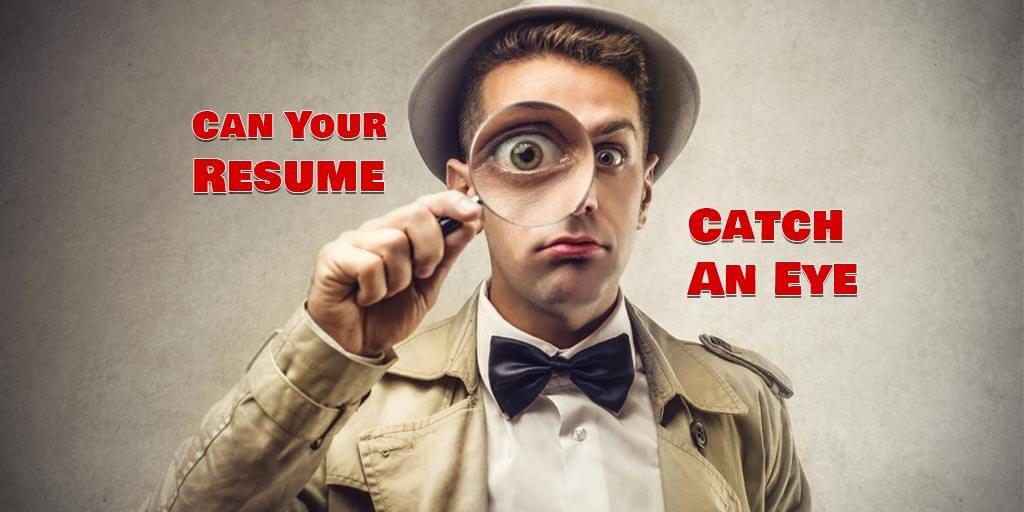
When something is eye-catching, it’s interesting, attractive looking and curiosity-inducing. For instance look at your resume with a very quick scan, how much do you like it, how much do you get out of it, and how much does it tell you about yourself? If it doesn’t tick all your boxes you need to consider revamping it.
Revamping or improving your resume requires attention to detail, some strategy, and time and effort. But most of all, it requires an understanding of the resume’s core purpose and processing, to begin with.
The purpose is simple, conveying your personal-professional information the right way. Processing is where it conveys the information of; criterions fulfilled, professional-academic prowess, and correlation with the job and/or the organization.
Processing of a resume involves; extracting/referencing information, analyzing a person’s skills, scrutinizing their association with the organization, and so on. Most of this is done in interviews but the resume is the starting point of it together with an accompanying cover letter. It is these documents submitted with a job application that incite the interviewing process.
With that in mind, we triangulated several factors that make for a positively attractive resume.
Balanced Layout Design
A good layout design for your resume is a must to make any strong statement. But when we speak of balance, we are talking about a certain symmetry and/or even distribution. The symmetry may be either horizontal or vertical. The layout design with everything left (margin) aligned can be horizontally symmetric while the design with a vertical page break and content distributed on either side can be vertically symmetric. But are they?
When we talk about evenness or evenly distributed content, we are talking about the information provided being laid out in such a way that each sub-section looks almost the same and properly separated. In a vertically divided layout, (imagined) boxes of same sizes, filled similarly will bring about symmetry. While in a left-aligned layout, heads at proper placement and sub-heads with similarly filled content will make it look balanced. Either way, maintaining similar word/character limits in content will make it look clear and appealing, compelling the reader to read it.
Text and Readability
While your resume looks well-segregated and evenly laid out, the next thing that would be noticed is the written content (unless there are other visual elements, which are not recommended). Selecting the right fonts, font size, and color makes it very important.
Classically, resumes are made on white background, where a font size of 12+ in black or dark grey work best and are print-friendly too. Headlines with font size 14-15 and any standard sans-serif font in bold look best. Sub-headings and content with a one-point difference in size, possibly 13-12 with bold sub-heads look best in any common serif fonts. Using similar looking sans-serif and serif fonts will impart integrity too. Using readable and legible texts is one of the best ways to attract attention.
Another great idea would be to use ‘bold’ text for important keywords and information to make them stand out from the text. Although, there is a fine line between relevant highlighting and nuisance, so be cautious, less is more.
Add References
This is where things can get interesting. Adding references to experience and/or academic information (especially freshers) along with projects, internships, freelancing, and others that can be confirmed adds a lot of credibility to the said points. Especially in case of CV’s where descriptive content is provided, references are a must. But providing them as a list, in the end, can be not-so-influential for initial/quick viewing. This is especially advantageous for people with extensive work, achievements, and undertakings, but also works positively for everyone. A good way will be to follow every point from the next line with a bold ‘Reference’ followed by the reference in the same line.
Example:
ABC at XYZ
From XXX to YYY (xy years)
Reference: PQR, via
With these simple and yet valuable steps, your resume can gain an advantage over others. Resume and CV formats are a helpful resource to save time and effort and provide a very good idea as to the design layout and the balance part as well. When a resume stands on the above criterions, it is bound to make a mark with your job application. Top it with an interesting and impressive cover letter, and you have the recipe to be a successful hire. Go get the job done!
Source: https://www.social-hire.com/blog/candidate/what-does-an-eye-catching-resume-look-like/

